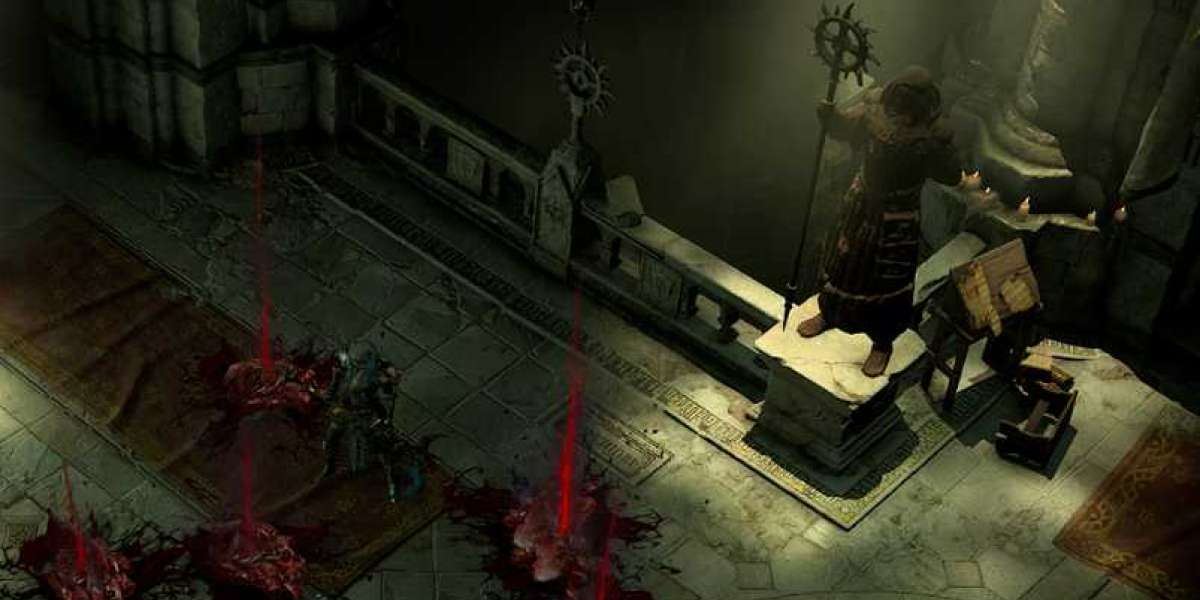Activision Blizzard developers have already announced what they have planned for Diablo IV. It's not definitive, but it doesn't hurt to look into everything from the game's price, its DLC and expansions, to microtransactions and their possible ramifications.
Whether it's the introduction of paid DLC in the 2000s, subscriptions, so-called "free-to-play" games or more recently lootboxes, the different ways used by publishers to make their games profitable have never failed to make a lot of headlines. It must be said that the video game industry is recent, as well as in constant evolution. And even if it's a little less the case nowadays, its audience is mostly composed of young people with no money (we're bordering on a pleonasm here). While the first two Diablo games are classic video game monetization models, Diablo 3 broke new ground by introducing the real money auction house, which was not without its share of problems, until it was removed shortly before the release of the Reaper of Souls expansion. As a mobile game, Diablo Immortal is likely to be a hit this year as well. But what about Diablo 4, which is going to be a long time coming? According to the comments made following its announcement at BlizzCon, it should take a more traditional approach to monetization*, at least in broad terms.
Diablo 4: Monetization planned
To elaborate, let's go over what the development team said on the spot, during the press conference that followed the announcement. Joe Shely, the Lead Game Designer, said that they plan to sell the base game as well as expansions. Cosmetic microtransactions are also planned, but they won't be selling anything that affects player power. This may seem reassuring at first, especially in the current climate, with some big publishers seeming strangely determined to try and squeeze every last penny out of their fans, even when they're obviously headed for a disaster in terms of image, and even sales. Fallout 76, followed by Bethesda's premium subscription Fallout First, is an example. And in Blizzard's case, Warcraft 3 Reforged is another, which doesn't necessarily make you want to give them the benefit of the doubt in the future.
Diablo 4: Price estimate
The base game should be sold between the proverbial €59.99 and €69.99, to which will eventually be added €15 to €30 for a Deluxe Edition, and much more for a Collector's Edition. Note that at the time of writing, these prices have not yet been announced, let alone revealed. This is just a guess on our part, based on industry practice and Activision Blizzard's track record. Since the game is far from finished, we don't yet know how regularly expansions will arrive, how much they will cost, what they will contain, and whether or not they will come with free content updates. It could be 30-40 euros every 1-2 years, or smaller but more regular amounts. It is likely that, for the moment, even the studio does not have a clear idea of what it will be able to offer, nor at what price and how regularly.
Microtransactions, on the other hand, are more likely to take the form of a conventional online store, with its share of portraits, mascots, outfits and dyes, rather than the Overwatch-style lootboxes popular (and reviled) in competitive games. The Chinese version of Diablo 3's store could serve as a model for this, although again, we're just looking at different assumptions. This is a monetization method adopted by many big games these days, as they are intended to be games as a service. What we consider to be a good example of a game that has adopted this model, and which is particularly familiar to us, is Monster Hunter World, with its Iceborne extension. Its store contains several dozen paid - but very dispensable - cosmetic DLC like stickers or costumes for the assistant. This does not prevent it from having regular content updates.
The financial dilemma of modern games
One can legitimately protest against introducing monetization elements from F2P games like League of Legends into a full-priced game with paid DLC. It may even seem like greed, but it's not without reason. From Activision Blizzard's point of view, the big problem with Diablo 3 is that it doesn't bring in regular revenue in the West. The company can only rely on boxed game sales, the expansion and the Necromancer DLC to bring in money since the removal of the sales floor. Since the base game dates back to 2012, the number of units sold monthly must be quite low by now. Still, the online servers are maintained and, modest as they are, content patches arrive every 3 months or so, which means maintaining even a minimal development team. Both cost money, so it's no wonder the studio is looking for a way to make its next title profitable in the long run. Cosmetics obtained in the form of paid microtransactions could probably be the most common answer, as well as the one best tolerated by players, since they wouldn't feel forced to pay to fully enjoy the content and complete the high-level challenges.
It must also be said that the base price of games has not increased significantly for many years now, while development costs have exploded. Modern games require much more work, at least in their realization, than those of the past. It is much harder to prepare nice textures and models in 4K with realistic physics for Diablo 4, than a few sprites and pixelated animations for Diablo 1 and 2 for example. The big publishers have not yet dared to directly increase the price of their games, for fear of the reaction of the general public, whose income has also stagnated for years (on average). Deluxe, Collector's and especially cosmetic DLC editions are therefore also methods to avoid increasing the base price of the game. A monthly subscription is obviously out of the question in 2020 for a game of this type (with all due respect to Bethesda).
For or against cosmetic microtransactions?
Once again, compared to the most aggressive practices in the industry, purely cosmetic microtransactions seem to be an acceptable sacrifice in the eyes of many, for reasons already mostly discussed in the section on funding. But this is not necessarily the opinion of everyone. One of the main arguments against them is that a lot of these cosmetics have simply been cut from the base game. Under other circumstances, they would have rewarded players for performing notable in-game actions. This practice may also influence the studio in its broader game design, as well as in the aesthetics of the Diablo IV items. Although it is never openly acknowledged, they may choose to deprive players of options that they would normally make available to them. For example, transmogrification or mods on PC, in order to push them to pay for them if they want to look cool in multiplayer. Also, the best cosmetic items tend to be exclusive to the store. A decade ago, few gamers would have suspected Blizzard of being capable of such a slippery slope, but their many missteps in recent years have seriously damaged their image and credibility in this area.



